Top 5 Affordable Watering Systems for Your Garden: Budget-Friendly Irrigation Solutions
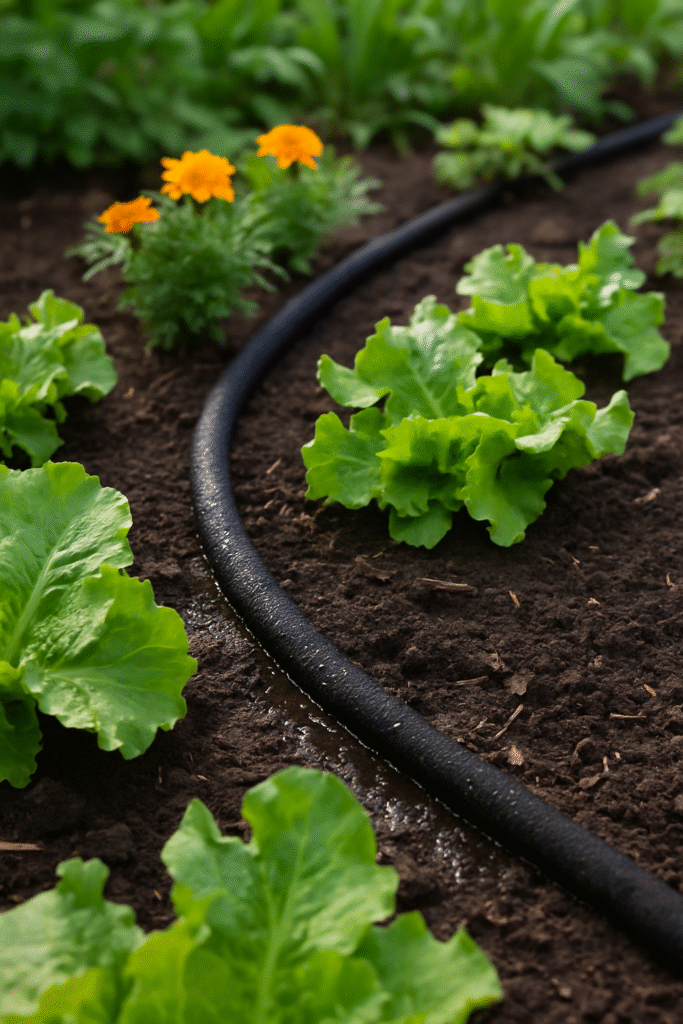
Watering your garden is essential—but it shouldn’t drain your wallet or take up your whole weekend.
Luckily, you don’t need an expensive, high-tech irrigation system to keep your plants healthy. There are affordable watering systems that make garden care easier, save water, and help your plants thrive—all while staying budget-friendly.
In this guide, I’ll share the top 5 affordable watering solutions for every type of garden, from small patios to large vegetable beds.
Why Use a Garden Watering System?
Even simple watering systems can transform your gardening routine. Here’s why:
- Saves Time: No more dragging hoses or carrying watering cans daily
- Conserves Water: Direct delivery reduces runoff and evaporation
- Keeps Plants Healthier: Consistent watering prevents stress, root rot, and dehydration
- Reduces Effort: Set it up once and let it do the work for you
Factors to Consider When Choosing a Watering System
Before you pick a system, think about:
- Budget: Affordable doesn’t have to mean cheap—it should be cost-effective and reliable
- Garden Size: Some systems are better for pots, others for large beds
- Ease of Installation: Choose DIY-friendly solutions if you’re not hiring help
- Water Source: Hose, tap, or rainwater—make sure your system matches your setup
- Plant Type: Lawns, vegetables, flowers, or potted plants may need different approaches
Top 5 Affordable Watering Systems
Here are the best budget-friendly ways to water your garden without breaking the bank:
1. Soaker Hoses
How It Works:
A soaker hose is a rubber hose with small holes throughout its length. You lay it along the base of your plants, turn on the tap, and it slowly releases water directly into the soil.
Best For:
- Garden beds
- Vegetable rows
- Shrubs and flower borders
Pros:
- Water goes straight to the roots—less waste
- Easy to set up and move around
- Affordable and durable
Cons:
- Not ideal for sloped gardens (water may pool unevenly)
- Needs regular checks for clogs
2. Drip Irrigation Kits
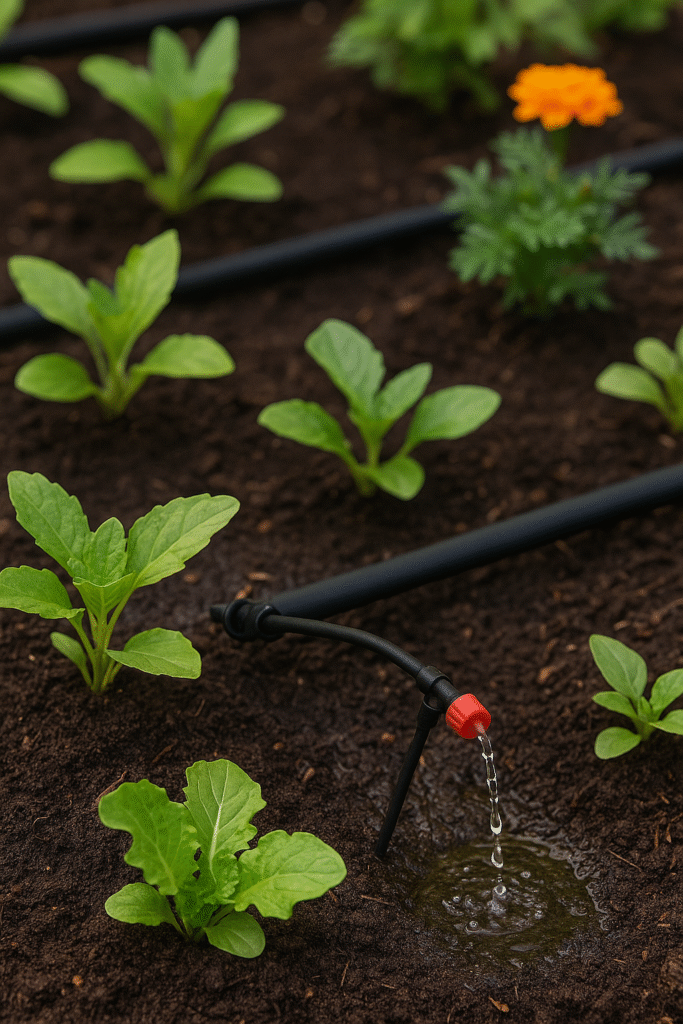
How It Works:
Drip irrigation systems use small tubes and emitters to deliver water to specific plants. Many kits are available online or at garden centers and are surprisingly affordable.
Best For:
- Vegetable gardens
- Hanging baskets and containers
- Raised beds
Pros:
- Extremely water-efficient
- Customizable for your garden’s layout
- Reduces risk of fungal diseases since leaves stay dry
Cons:
- Setup takes time initially
- Needs occasional maintenance to prevent clogging
3. Rain Barrel with Gravity Feed Hose
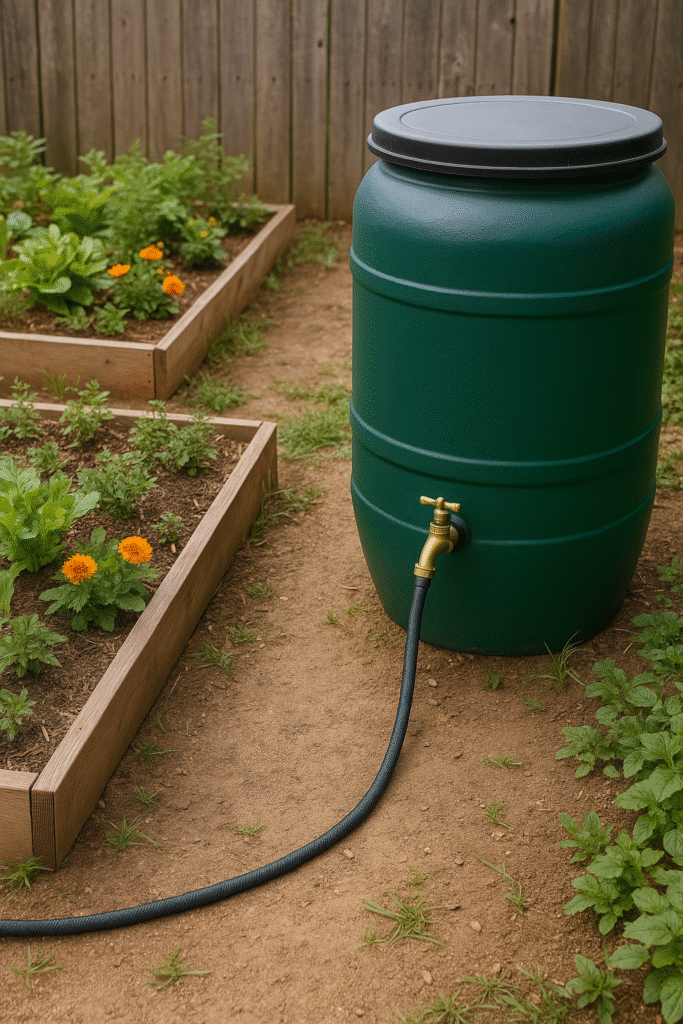
How It Works:
Collect rainwater from your roof in a barrel, then use a hose or soaker attachment to water your garden using gravity.
Best For:
- Eco-friendly gardeners
- Small to medium gardens
- Areas with regular rainfall
Pros:
- Cuts down water bills
- Sustainable and eco-conscious
- Easy to install and maintain
Cons:
- Dependent on rainfall
- Requires elevated placement for better water flow
4. Simple Sprinkler Systems (Oscillating or Rotary)
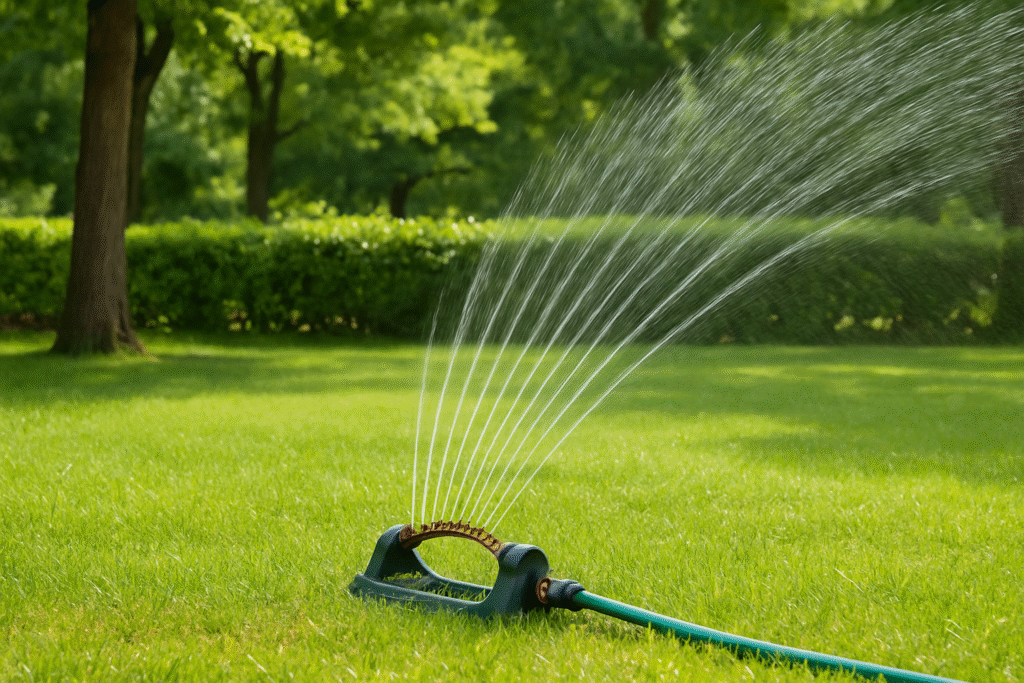
How It Works:
Connects directly to a garden hose and sprays water over a large area.
Best For:
- Lawns
- Large flower beds
- Kids who love to run through sprinklers!
Pros:
- Inexpensive and easy to find
- Quick and simple setup
- Covers a wide area effortlessly
Cons:
- Less precise—can waste water on paths or patios
- Not ideal for container plants or focused watering
5. DIY Bottle Drip System
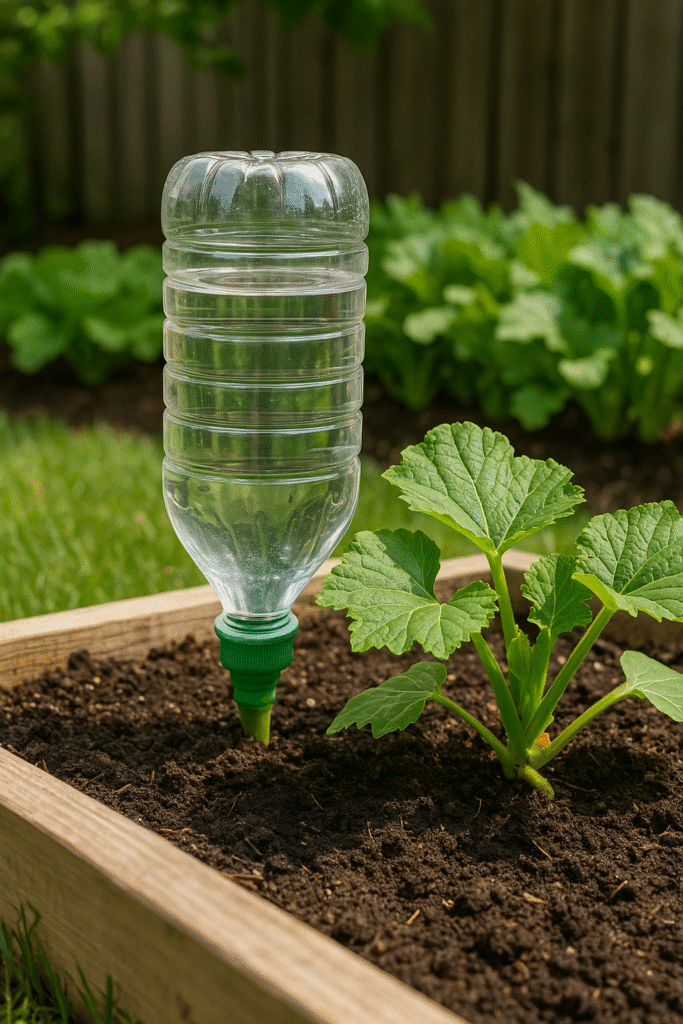
How It Works:
Recycle old plastic bottles by poking small holes in the cap, filling them with water, and placing them upside down near plant roots.
Best For:
- Potted plants
- Raised beds
- Gardeners on vacation
Pros:
- Nearly free—reuse materials you already have
- Provides slow, steady watering
- Great for reducing waste
Cons:
- Not practical for large gardens
- Needs refilling for continuous use
Bonus Tips for Watering Your Garden Efficiently
- Water Early or Late: Morning or evening watering reduces evaporation
- Use Mulch: Helps retain moisture in the soil
- Group Plants by Water Needs: Saves time and prevents over/underwatering
- Adjust Seasonally: Water more during hot spells, less when it rains
Common Mistakes to Avoid
- Overwatering: More water isn’t always better—check the soil first
- Ignoring Leaks: A small hole can waste a lot of water
- Using the Wrong System: Match your system to your garden’s size and needs
- Neglecting Maintenance: Clean hoses and drip emitters to prevent clogs
Conclusion
Watering your garden doesn’t have to be complicated—or expensive. With these top 5 affordable watering systems, you’ll save time, conserve water, and keep your plants healthy without breaking your budget.
Whether you choose a soaker hose, drip irrigation, or a DIY bottle system, the key is to pick the method that works best for your space.